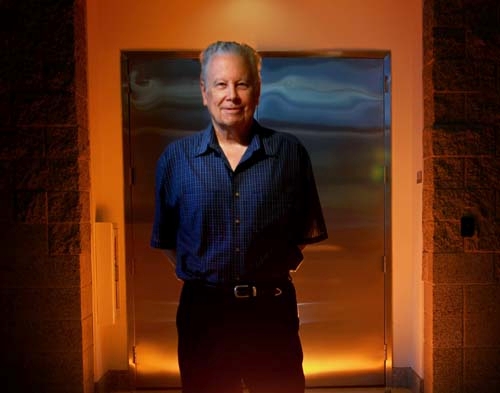Ex-Army colonel visits Atomic Testing Museum to lecture on UFOs


"UFOs are real," and "whatever this is, it’s far more complex than we ever anticipated."
That is how retired Army Col. John B. Alexander sums up his view on unidentified flying objects, reciting the first and last lines from his book, "UFOs: Myths, Conspiracies, and Realities."
Like a flying saucer, the topic will be whirling among a panel of former senior military officers when they join Alexander and moderator Allan Palmer to lecture on "Military UFOs: Secrets Revealed" at 6 p.m. today at the National Atomic Testing Museum. Palmer, a former Navy commander and Air Force aviator, is chief executive officer of the nonprofit museum, an affiliate of the Smithsonian Institution.
Alexander, 74, of Las Vegas, was a Special Forces commander in Vietnam and Thailand, and is known for his insights on paranormal experiences in the military as featured in the Jon Ronson book "The Men Who Stare At Goats."
Alexander, who has advised the CIA, the Special Operations Command and the National Intelligence Council, thinks that 95 percent of UFO sightings can be explained as hoaxes, aircraft, lighting, optical illusions and natural phenomena.
"Don’t be surprised if strange things fly in the desert," he said, alluding to the high-tech stealth aircraft and odd-shaped spy planes that were developed and tested at the secret Groom Lake installation known as Area 51, roughly 90 miles north of the Las Vegas Valley.
Alexander thinks the much-publicized UFO incident at Roswell, N.M., in 1947 involved debris from a military test to see if a balloon could endure high altitudes and stiff crosswinds for use in spying on a Soviet nuclear test.
The military covered up the incident, not because it was hiding an extra-terrestrial craft but because it just didn’t want the USSR to learn of the top-secret effort from American television, he said.
After leaving the Army, Alexander, worked on nonlethal weapons concepts at the Los Alamos National Laboratory in New Mexico. He said he once consulted the late Edward Teller about the Roswell incident and recounts that the famous physicist agreed it wasn’t a UFO crash because the evidence would have been brought to Los Alamos for testing and evaluation.
But questions remain about the small percentage of unexplained UFO sightings and incidents.
For that 5 percent, Alexander said, "I don’t think we’re at the point of asking the right questions, let alone come up with simple answers."
What exactly is a UFO?
"We don’t know," Alexander said. "We need to begin with a workable definition. There’s a huge variation, and it’s a global phenomenon."
Alexander concluded his military service as director of the Advanced System Concepts Office at the U.S. Army Laboratory Command. He also formed an interagency group on UFOs that included members of the military, intelligence community and the aerospace industry.
His panel will include U.K. Ministry of Defense official Nick Pope; retired Col. Robert Friend, head of the joint Royal Air Force/U.S. Air Force Project Blue Book; former chief Air Force and Project Blue Book spokesman Col. Bill Coleman; and Col. Charles Halt, former deputy base commander of Royal Air Force Bentwaters, where UFO sightings were reported in 1980 near Suffolk, England.
The lecture at the museum, 755 E. Flamingo Road, is the fifth in a series centered around the exhibit "Area 51 – Myth or Reality."
The event is open to the public, but seating is limited. For reservations: 702-794-5150. Tickets are $20 for museum members; $35 for nonmembers.
Contact reporter Keith Rogers at krogers@reviewjournal.com or 702-383-0308.












